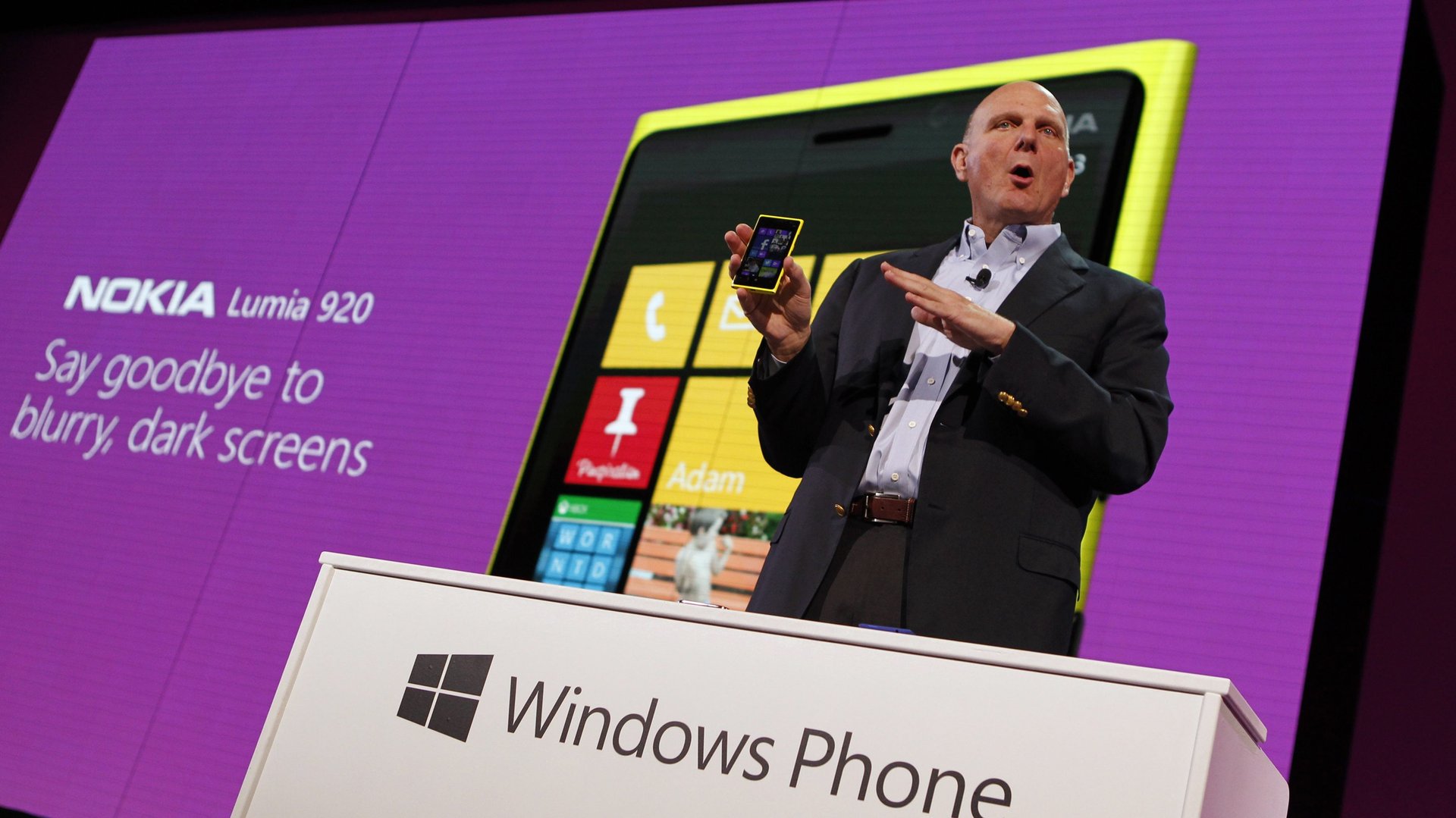Microsoft’s history of middling acquisitions hasn’t yet hurt investors
Remember Yammer? What about Aquantive? And need we mention Nokia? Those are some of the companies Microsoft spent more than $1 billion each to acquire. And while you may recognize the names, the lack of relevance to your day-to-day life tells you everything you need to know about how those brands fared following deals with Microsoft.


Remember Yammer? What about Aquantive? And need we mention Nokia? Those are some of the companies Microsoft spent more than $1 billion each to acquire. And while you may recognize the names, the lack of relevance to your day-to-day life tells you everything you need to know about how those brands fared following deals with Microsoft.
So it should be no surprise that Microsoft’s stock fell by 2.6% on Monday (June 13), after announcing that it would spend $26.2 billion to acquire LinkedIn, its biggest deal ever. But a closer look at Microsoft’s stock price in the wake of earlier mega-deals suggests that, actually, the company has done rather well for investors in spite of its lackluster acquisition track record.
Here’s how Microsoft’s stock has performed 12 and 24 months after billion-dollar deals over the past decade:
Microsoft has risen in all but one case two years after a major acquisition, in most cases keeping up with the prevailing trend in the Nasdaq index at the time. Of course, we can’t solely attribute the rise in valuation with the company’s dealmaking, and we don’t know whether it would have fared better or worse if it didn’t do the deals. It seems the case, though, that investors have continued to keep faith in Microsoft despite high-profile M&A missteps.
If you need a refresher on those bungles, recall the more than 7,000 layoffs and $7.6 billion write-down Microsoft made on its Nokia buy. Sure, Microsoft still has 300 million monthly active users on the once ubiquitous Skype, which, to put it in context, is about the same amount as a chat app called Viber. Skype’s numbers are dwarfed by Facebook Messenger’s 1 billion monthly users.
Then there’s Yammer, which has seen its growth stagnate. It trumpeted hitting 8 million registered users in 2013, about a year after getting bought by Microsoft, but it seems to have grown that base by just 2 million over the past three years. Meanwhile, Slack is burning up the enterprise chat space, with its daily active user count skyrocketing. It last reported 3 million daily active users, and it got there in under two years.
Will the blockbuster LinkedIn deal finally be a step too far for the mighty Redmond giant? It’s worth remembering that when Microsoft bought Skype in May 2011, under CEO Steve Ballmer, it paid $8.5 billion. That represented nearly a quarter of its cash and equivalents on hand at the time, roughly the same ratio it’s paying for LinkedIn today. If Microsoft’s track record is any indication, investors may not be unhappy with its latest acquisition for too long.